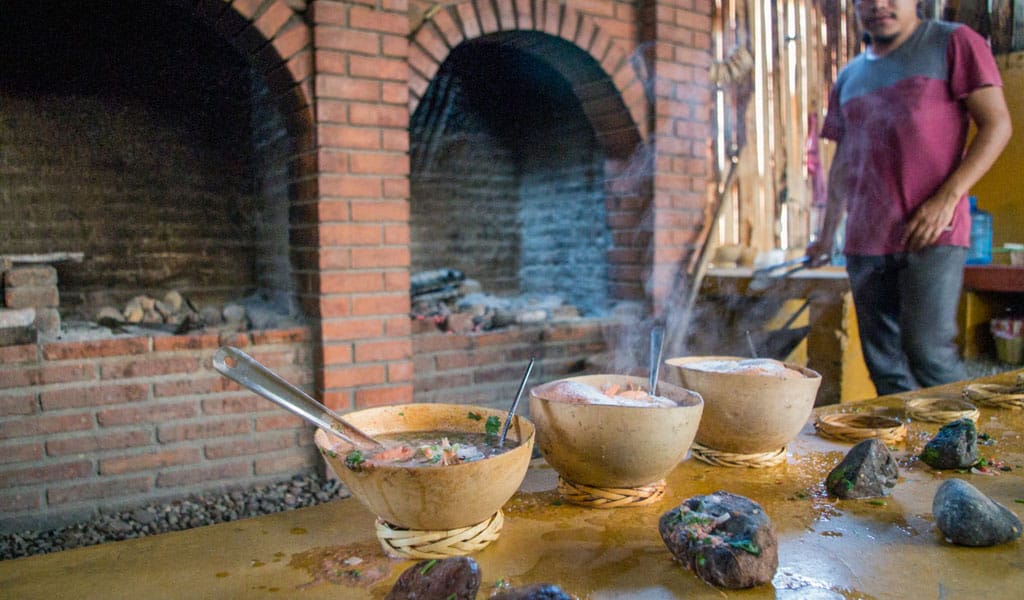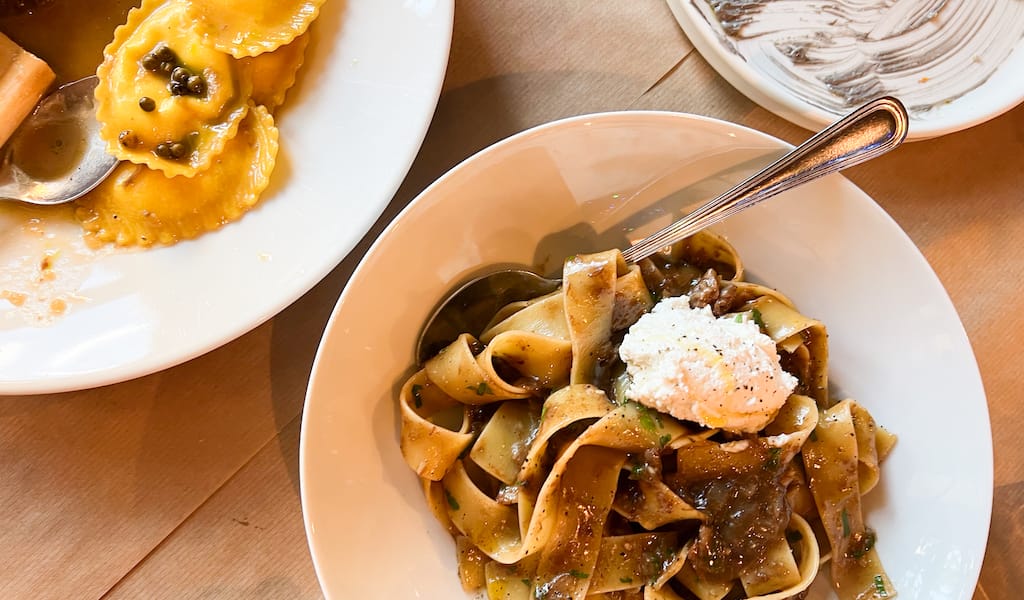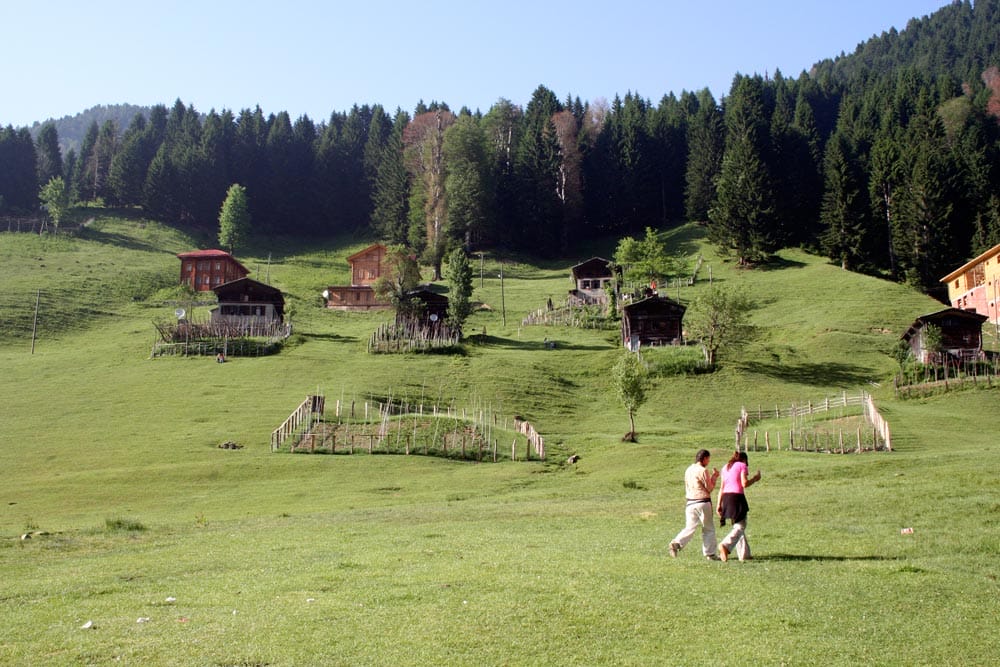In Oaxaca, a state where gastronomy is almost a religion, there are some extraordinary dishes that are prepared only for special occasions because of the complexity of preparation. Mole chichilo, for example, uses more than 30 ingredients, and its preparation can take up to 3 days.
But there are spectacularly tasty (and complex) dishes that can be had anytime. One of these is caldo de piedra (stone soup) from the Tuxtepec region. On our last visit to Oaxaca City, we visited a restaurant a few miles outside of the center whose rendition of this soup blew our minds.
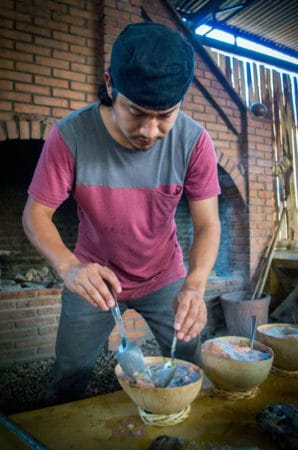 The place is located on the road that connects Oaxaca City with El Tule, a small community whose claim to fame is that it’s home to one of the largest trees on earth. Caldo de Piedra – named after the soup for which it’s famous – is both unpretentious and inviting: it’s a large hut with a palm roof, dirt floors and rustic wooden tables. The back of the restaurant is lined with two spacious wood ovens, a long concrete counter and a large comal (griddle) over a wood fire where tortillas are prepared by hand. The whole atmosphere feels like the kitchen of a grandmother at the turn of the last century.
The place is located on the road that connects Oaxaca City with El Tule, a small community whose claim to fame is that it’s home to one of the largest trees on earth. Caldo de Piedra – named after the soup for which it’s famous – is both unpretentious and inviting: it’s a large hut with a palm roof, dirt floors and rustic wooden tables. The back of the restaurant is lined with two spacious wood ovens, a long concrete counter and a large comal (griddle) over a wood fire where tortillas are prepared by hand. The whole atmosphere feels like the kitchen of a grandmother at the turn of the last century.
The menu features just a few items: quesadillas, empanadas and three different types of caldo de piedra – fish, shrimp or a mixture of both. The soup, of course, is the star of the menu. To prepare it, all the ingredients (shallots, garlic, cilantro, epazote, tomato, salt and your choice of seafood) are placed raw in a large jicara, a bowl made from the fruit of the calabash tree.
The next step is to drop a hot fist-sized stone into the bowl to cook all the ingredients. The stones are heated for two hours in an oak fire. “It is very important to use the right firewood to get the right temperature,” said Victor Gachupín, the owner’s son. The stones must reach 300 degrees Celsius to be able to cook the ingredients thoroughly. One stone is often not enough, so a second and sometimes a third stone must be placed in the bowl.
The preparation of this dish is a spectacle – but the soup itself is also much more than that. It’s traditionally been prepared by the men of the Chinanteco ethnic group (located in the north of Oaxaca) to honor the women, elderly and distinguished members of their society. Men make all the hard preparations on the basin of the Papaloapan River, while women enjoy the day with their children in the river. Using heated stones instead of cooking the soup directly over heat is a pre-Hispanic tradition that comes from that part of Oaxaca.
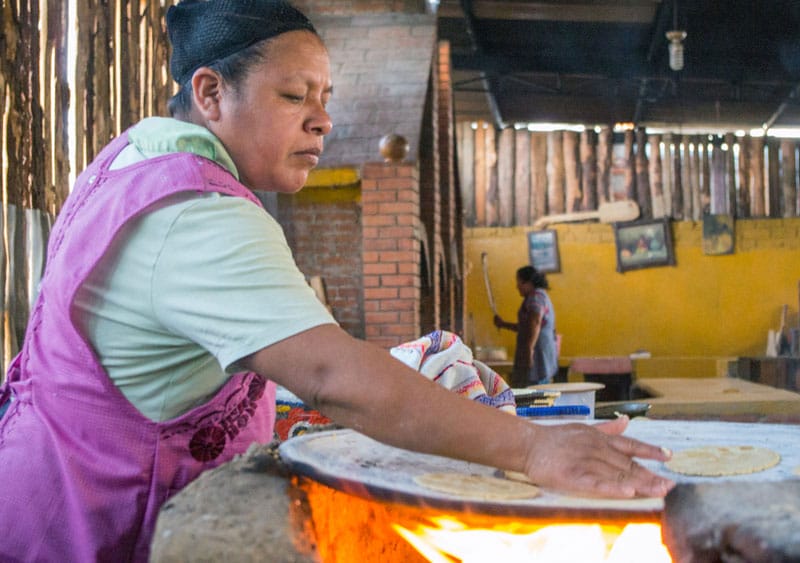
Since 1996, when they opened the restaurant, the Gachupíns have used only ingredients they grow themselves and tools brought from their native town, San Felipe Usila. The stones are hand-picked from the basin of the river and sent to the restaurant.
Like with the other ingredients used, the Gachupíns use only the “freshest” stones – the rocks can withstand the heat and the change of temperature, but after one use they are no longer strong enough to be heated up again.
 December 29, 2023 Best Bites 2023: Athens
December 29, 2023 Best Bites 2023: Athens
The food scene in Greece is constantly being enriched. More and more local chefs are […] Posted in Athens January 31, 2018 Sun-Dappled Pasteis De Nata
January 31, 2018 Sun-Dappled Pasteis De Nata
Our Culinary Crossroads walk in Lisbon wouldn’t be complete with a stop for the city’s […] Posted in Lisbon June 27, 2014 CB on the Road
June 27, 2014 CB on the Road
Update: This spot is sadly no longer open.
Trabzon doesn’t face the sea so much as […] Posted in Istanbul
Published on June 20, 2017
Related stories
December 29, 2023
AthensThe food scene in Greece is constantly being enriched. More and more local chefs are opening their own restaurants, many of which have a creative focus on the local cuisine and produce. Seasonality, sustainability, tradition and high-quality ingredients are in the spotlight and traditional cuisine gets to shine with the sophisticated touch of a talented…
January 31, 2018
LisbonOur Culinary Crossroads walk in Lisbon wouldn’t be complete with a stop for the city’s iconic and delicious custard tart, pastel de nata. These ones were shot on a particularly beautiful winter day, when the sun was shining down on the City of Light.
June 27, 2014
IstanbulUpdate: This spot is sadly no longer open. Trabzon doesn’t face the sea so much as fall into it like it’s hugging an old friend. The weight of dozens of mountains and just as many rivers pushes the city into the Black Sea, and the blue-collar port and ribbons of highways get the region’s bounties…







































